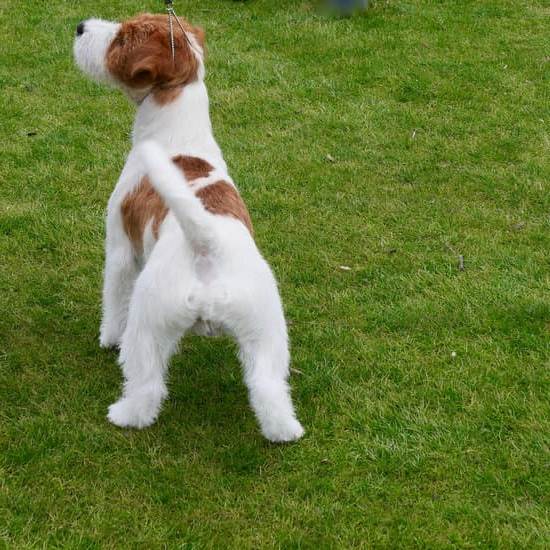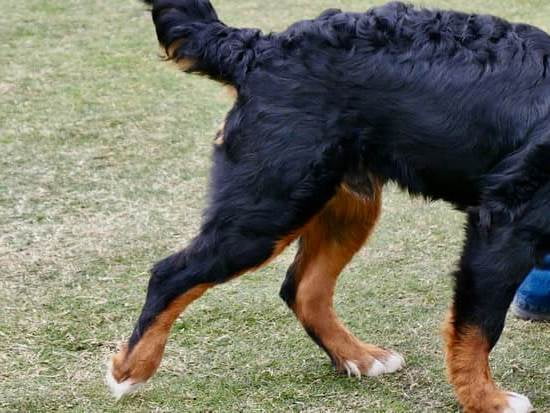Are you wondering how to potty train a dog in 3 days? Potty training is an essential part of raising a well-behaved and happy dog. In this article, we will explore the importance of potty training for dogs and provide you with a comprehensive guide to achieving successful results in just three days.
Potty training your dog not only helps maintain a clean and hygienic living environment but also strengthens the bond between you and your furry friend. By understanding the significance of potty training, you can effectively set your dog up for success and create a harmonious living space for both of you.
In the following sections, we will delve into the preparation needed for successful potty training, the establishment of a routine, positive reinforcement techniques, how to handle accidents, crate training benefits, consistency maintenance beyond the 3-day period, troubleshooting common challenges that may arise, and ultimately celebrating your success in achieving a well-trained dog. So let’s get started on this journey to potty train your dog in just 3 days.
Preparing for Potty Training
Potty training a dog in 3 days is an ambitious goal, but it is definitely achievable with the right approach. One of the key factors in successfully potty training your dog in a short amount of time is setting the right environment and schedule. By creating the ideal conditions for your dog to learn and consistently reinforcing good habits, you can make significant progress in just 3 days.
First and foremost, it’s important to designate a specific potty area for your dog. This could be a spot in your yard or a pee pad indoors if you live in an apartment. By providing a consistent location for your dog to relieve themselves, you are helping them understand where it is appropriate to go.
Additionally, establishing a regular feeding schedule can greatly aid in potty training. Dogs typically need to go to the bathroom shortly after eating, so by feeding them at the same times each day, you can predict when they will need to go outside. This predictability makes it easier for you to guide your dog to the designated potty area at the right times.
Lastly, creating a comfortable and safe space for your dog when they are not being supervised is essential. Whether you use a crate or confine them to a small area, this helps prevent accidents when you are unable to closely monitor them. This set-up also encourages your dog to hold their bladder and wait until they are taken outside.
| Setting Environment | Establishing Schedule |
|---|---|
| Designate specific potty area | Create regular feeding times |
| Provide comfortable and safe space | Predictable bathroom breaks post-mealtime |
Establishing a Routine
Consistency Is Key
When it comes to potty training your dog in 3 days, consistency is absolutely crucial. This means taking your dog outside to eliminate at the same times every day – first thing in the morning, after meals, before bedtime, and so on. By establishing a routine, you are helping your dog understand when it’s time to go potty, making it easier for them to learn and adapt to the new behavior.
Use Commands
Using verbal commands can also help establish a routine for potty training. Give your dog a specific command like “go potty” or “do your business” every time you take them outside. This will help them associate the command with the action of eliminating and can eventually lead to them going on command. Be consistent with using these commands every time you take your dog out.
Monitor Food and Water Intake
To establish an effective routine, it’s also important to monitor your dog’s food and water intake. By feeding your dog at set times throughout the day, you can predict when they will need to go potty. Additionally, managing their water intake can help prevent accidents indoors.
Make sure to remove water bowls a few hours before bedtime to minimize nighttime accidents. Understanding and managing their eating and drinking schedule is essential in establishing a successful routine for potty training.
By incorporating these strategies into your potty training routine, you can increase the chances of successfully training your dog within 3 days. Remember that patience and consistency are key when implementing these routines as you work toward achieving quick success in potty training.
Positive Reinforcement
When it comes to potty training your dog in just 3 days, positive reinforcement is a crucial aspect of the process. Using treats and praise can significantly encourage good behavior and reinforce the habits you are trying to instill in your furry friend. Here’s how to incorporate positive reinforcement effectively into your potty training routine:
1. Use high-value treats: When your dog successfully eliminates in the designated spot, immediately reward them with a high-value treat. This could be a small piece of cooked chicken, turkey, or any other treat that your dog absolutely loves. The key is to make sure the treat is something they find irresistible and worth working for.
2. Praise and affection: In addition to treats, shower your dog with praise and affection when they exhibit the desired behavior. Use an enthusiastic tone of voice and pet them lovingly to communicate that they have done something wonderful.
3. Timing is everything: It’s essential to deliver the treat and praise within seconds of your dog eliminating in the right spot. This immediate reinforcement helps them make a clear connection between their action and the reward.
Consistency is crucial when using positive reinforcement for potty training. By consistently rewarding good behavior, your dog will quickly understand what is expected of them, making the potty training process much more effective for both you and your pet.
Handling Accidents
Accidents are bound to happen during the potty training process, but how you react and clean up can make a significant impact on your dog’s learning and progress. It’s important to remain calm and collected, as getting upset or scolding your dog can have negative effects on their training. Instead, take a deep breath and focus on addressing the situation in a positive and constructive manner.
Immediate Reaction
When you catch your dog in the act of having an accident indoors, it’s crucial to interrupt them without causing fear or distress. Simply say “No” firmly and gently guide them outside to finish their business. Avoid making loud noises or sudden movements that may startle your dog, as this can create anxiety around potty training.
Cleaning Up
After removing your dog from the indoor accident scene, it’s time to thoroughly clean up the mess. Use an enzymatic cleaner specifically designed for pet accidents to effectively eliminate any lingering odors that could attract your dog back to the same spot. Be sure to follow the product instructions carefully for best results.
Preventing Future Accidents
To minimize future accidents, closely monitor your dog’s behavior and take note of any signs that they need to go outside. By anticipating their needs and providing timely bathroom breaks, you can proactively prevent accidents from occurring inside. Remember that patience is key during this process, as every dog learns at their own pace when it comes to potty training.
By understanding how to react calmly and clean up effectively after accidents, you’ll be better equipped to support your dog through the potty training journey. Keep in mind that accidents are a natural part of the learning process, so approach each situation with patience and positivity as you guide your furry companion towards success using the methods mentioned in ‘How to Potty Train a Dog in 3 Days‘.
Crate Training
Crate training is an effective method to potty train a dog in 3 days. A crate can help with the process by providing a safe and secure space for your puppy when you cannot directly supervise them. When used properly, a crate can aid in teaching your dog bladder and bowel control, as well as establishing a routine for potty breaks.
To start crate training, choose an appropriately sized crate for your dog. The crate should be large enough for your pet to stand up, turn around, and lay down comfortably, but not too large that they can eliminate at one end and retreat to the other. Introduce the crate slowly and make it a positive and inviting space by placing comfortable bedding inside and leaving the door open initially so your dog can explore it on their own.
When utilizing crate training for potty training success, it is essential to establish a consistent routine. Take your dog outside to eliminate first thing in the morning, after meals, before bedtime, and any time you notice signs that they need to go (sniffing around, circling, or whining). If your dog does not eliminate when taken outside, bring them back inside and place them in their crate for 10-15 minutes before trying again.
Using positive reinforcement techniques such as treats and praise will also encourage good behavior when transitioning to using the crate as part of the potty training process. When your dog eliminates outside, immediately reward them with praise and a small treat to reinforce that going potty outside is what you want. With consistency and patience in following these steps, you can successfully utilize a crate for potty training your dog in just 3 days.
| Method | Description |
|---|---|
| Choose an appropriately sized crate | The right size will ensure comfort without allowing elimination on one end |
| Establish a consistent routine | Take your dog out at specific times each day to establish good habits |
| Use positive reinforcement techniques | Reward good behavior with treats and praise to encourage desired outcomes |
Consistency Is Key
Once you have successfully potty trained your dog in 3 days, it is essential to remember that consistency is key in maintaining their training. Dogs thrive on routine and structure, so it’s important to continue reinforcing their good behavior beyond the initial training period. Here are some tips for maintaining the potty training success with your dog:
- Stick to a Schedule: Continue taking your dog outside at consistent times throughout the day to reinforce their potty training. This routine will help them understand when and where they should go to relieve themselves.
- Monitor Their Behavior: Pay attention to any signs that your dog needs to go outside, such as pacing or sniffing around. By recognizing these cues, you can prevent accidents indoors and continue to reinforce their good habits.
- Stay Patient and Positive: Even after the initial 3-day training period, be consistent in using positive reinforcement techniques such as praise and treats when your dog successfully goes potty outside. This encouragement will help them understand what behavior is expected of them.
It’s also important to remember that accidents may still happen beyond the 3-day training period. If your dog does have an accident indoors, remain calm and clean up the mess thoroughly using an enzyme-based cleaner designed specifically for pet odors. Avoid scolding or punishing your dog for accidents, as this can cause confusion and anxiety.
In addition to maintaining a consistent potty training routine, it’s crucial to continue providing mental stimulation and regular exercise for your dog. A well-exercised and mentally stimulated dog is less likely to have behavioral issues, including accidents in the house. By keeping up with their physical and mental needs, you can help prevent regression in their potty training progress.
Troubleshooting
Despite your best efforts, sometimes potty training a dog in 3 days doesn’t go as smoothly as planned. It’s essential to be prepared for common challenges that may arise during the process and have effective solutions at hand. One of the most common issues is when a dog refuses to eliminate outside.
This can be frustrating, but it’s important not to get discouraged. In these cases, it’s advisable to limit the dog’s access to indoor spaces by using baby gates or keeping them on a leash while inside. This will encourage them to hold it until they are taken outside.
Another common challenge is when a dog continues to have accidents inside despite consistent training efforts. To address this issue, consider revisiting the basics of crate training and closely monitoring the dog’s behavior for signs that they need to go outside. Accidents may also occur due to medical reasons or anxiety, so consulting with a veterinarian is recommended if the problem persists.
In some cases, dogs may display reluctance or fear towards going potty in certain outdoor areas. This could be due to unfamiliar smells, loud noises, or other environmental factors. To address this challenge, gradually introduce your dog to different outdoor environments and provide positive reinforcement when they successfully eliminate in those areas.
By slowly acclimating them to various settings, you can help alleviate their fears and improve their comfort level outside. Remember that every dog is different, so it’s crucial to be patient and adaptable in finding the right solutions for their individual needs.
Overall, potty training a dog in 3 days requires patience, consistency, and a willingness to adapt your approach based on your dog’s behavior and needs. By addressing common challenges with proactive solutions and a positive attitude, you can overcome any obstacles that arise during the training process and set your furry friend up for long-term success.
Conclusion
In conclusion, potty training a dog in 3 days is absolutely achievable with the right approach, dedication, and consistency. By understanding the importance of potty training for dogs, preparing the right environment and schedule, establishing a routine, using positive reinforcement, handling accidents effectively, crate training, maintaining consistency beyond the initial 3 days, and addressing common challenges effectively, pet owners can set their dogs up for success.
It’s important to remember that while the initial 3-day training period is crucial for laying a solid foundation, ongoing reinforcement and maintenance of good habits are essential for long-term success.
The key to successfully potty train a dog in such a short period is to invest time and effort in understanding your dog’s behavior and needs. By utilizing positive reinforcement techniques such as treats and praise and reacting calmly to accidents while cleaning up effectively, owners can create a supportive environment for their pets to learn. Additionally, crate training can be incredibly effective in helping dogs understand boundaries and develop self-control when it comes to potty habits.
Overall, successful potty training ultimately leads to a happy, well-trained dog who understands boundaries and has good bathroom habits. By following these guidelines and being patient with your furry friend, you can celebrate success after the initial 3-day period and continue on with a positively reinforced routine that will benefit both you and your dog in the long run.
Frequently Asked Questions
How Do You Potty Train a Dog ASAP?
Potty training a dog ASAP requires consistency, patience, and positive reinforcement. Establish a routine for taking the dog outside to potty, reward them when they go in the right place, and clean up accidents properly to avoid reinforcing bad habits.
Is It Possible to Potty Train a Puppy in 3 Days?
While it may be possible to make significant progress in potty training a puppy in 3 days, fully training them in such a short time is unlikely. Puppies have small bladders and limited control, so it’s important to be realistic and patient during the process.
At What Age Are Dogs Easiest to Potty Train?
Dogs are generally easiest to potty train when they are between 12-16 weeks old. At this age, they have enough control over their bladder and bowel movements to start understanding the concept of potty training. However, each dog is different, so some may be easier or more difficult to train regardless of age.

Welcome to the blog! I am a professional dog trainer and have been working with dogs for many years. In this blog, I will be discussing various topics related to dog training, including tips, tricks, and advice. I hope you find this information helpful and informative. Thanks for reading!





